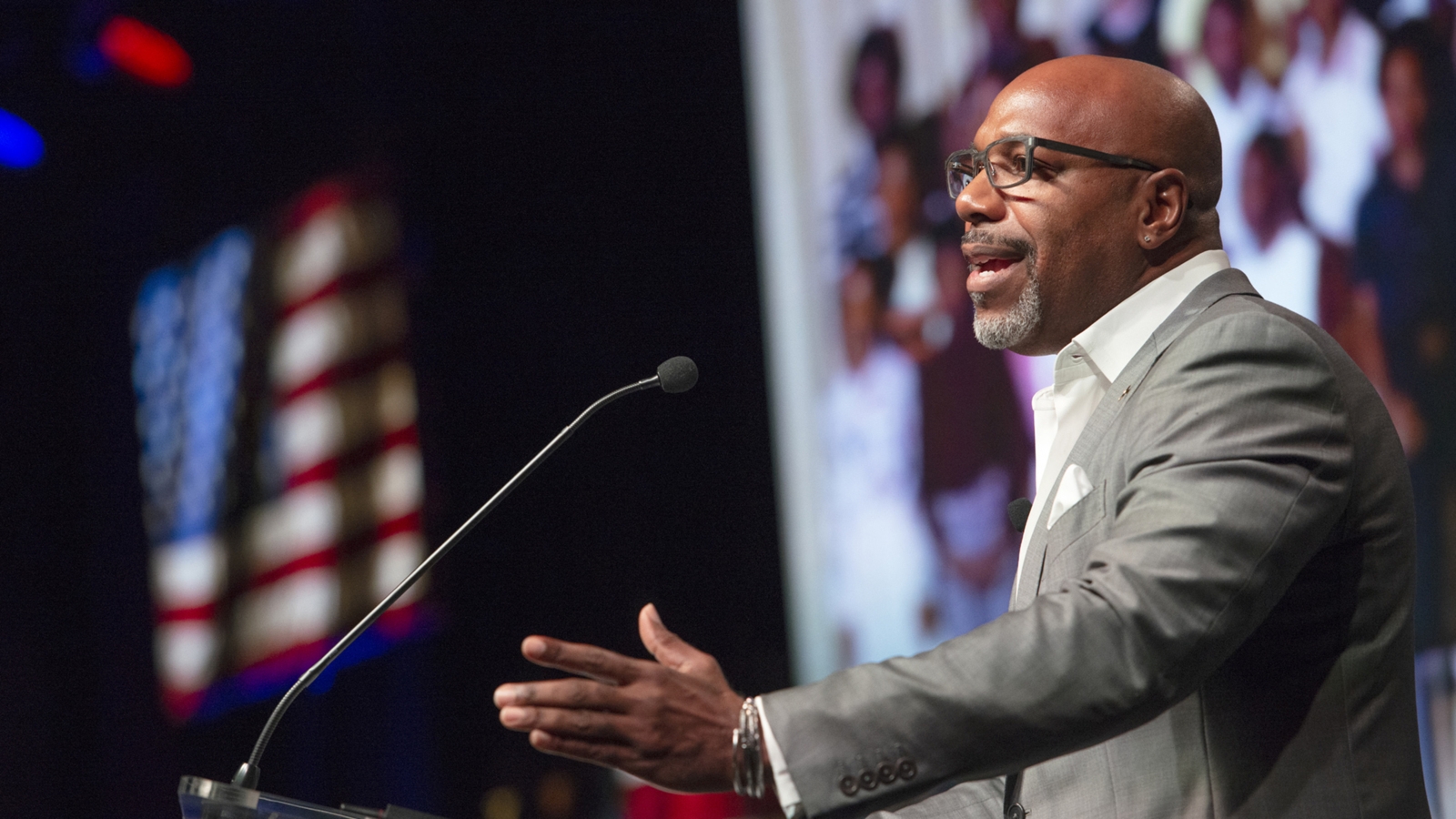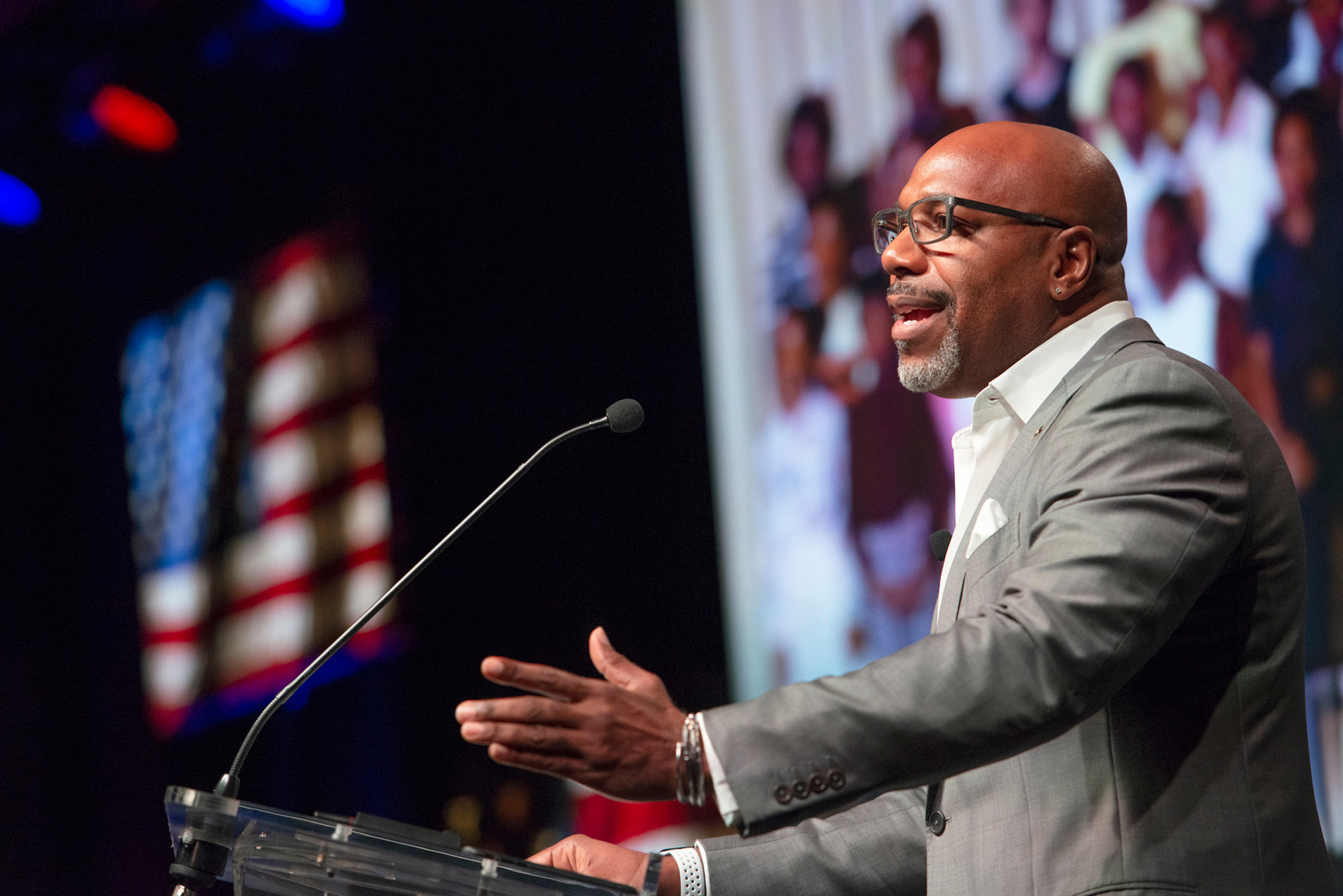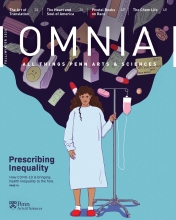Courageous Conversation
Glenn Singleton, C’86, is on a mission to achieve racial equity through honest dialogue.

Glenn Singleton, C’86, started his career mere steps from Locust Walk as an admissions officer in College Hall, a position he describes as “exciting and nourishing.” That experience inspired him to pursue graduate study at the Graduate School of Education at Stanford University. While doing his graduate fieldwork, he witnessed educational and social inequities that led him away from higher education administration and policy and toward work to directly impact students, particularly low-income students of color.
Singleton launched Pacific Educational Group—a consulting firm committed to achieving racial equity in the U.S. and beyond—along with two non-profit foundations. He also created a protocol for deepening interracial dialogues called Courageous Conversations. Today, he works with school districts, state governments, and corporations in various sectors throughout the U.S. and around the world.
Q: Were you always someone who had courageous conversation in your own life?
In my graduate work, the inequities I saw didn’t match my own educational experience as a Black student attending a private school in Baltimore. However, at Park School, I was always one of the only Black students in the classroom. Then, I needed to learn how to effectively communicate with my peers and teachers, who rarely understood and often diminished my racial struggles. As I moved on to Penn, that phenomenon continued in many similar and some new ways. For example, as a senior, I was the only Black cast member in the Mask and Wig Club and one of a handful in my fraternity.
Q: How did Pacific Educational Group evolve?
I founded Pacific Educational Group in 1992 to help under-resourced students understand the process of high school course selection and how to navigate the college admissions process, so that they could access more opportunities in college and beyond. That mission grew into a deeper exploration of transforming high schools into places that are meaningful, rigorous, and exciting for students who were otherwise disengaged. That work prompted invitations from the state departments and local districts to lead conversations about developing more diverse school leaders and championing educational and racial equity. Talking about race in this country is difficult; in the ’90s, it was even more so. I asked PreK-12 educators to have courageous conversation about why schools are not structured, systemically, to meet the needs of children, families, and communities of color.
Q: How did Penn impact you?
Attending Penn is an amazing aspect of my life and my family’s experience. I recognize that I received an extraordinarily elite, prestigious and well-resourced education. I appreciate every moment of my education–my coursework in the Annenberg School, traveling the country with Mask and Wig and working in the admissions office are highlights. It was impactful to be surrounded by the handful of dedicated faculty and administrators of color who nurtured me, either in-person or simply by being present in my environment, like English Professor Houston Baker, the late A. Leon Higginbotham Jr. at the law and education school or our dean, the late Harold “Hask” Haskins. At the time, Penn’s president was Sheldon Hackney who I got to know because of my work in admissions. I appreciated his commitment to battling a conservative national constituency determined to negatively redefine his championing of multiculturalism as “political correctness.” Dr. Hackney rightly recognized the institutional responsibility to include all peoples’ narratives and understand why some in this country are resistant to do so.
Talking about race in this country is difficult; in the ’90s, it was even more so.
Q: Your company partners with some of the largest school districts in the country. What has been one of your proudest achievements?
Our work is about systemic racial equity transformation in education as well as in the private sector. This means looking at the whole system and engaging everyone—from top to bottom—in a process of transformation. We currently work in many school districts including Oakland, San Francisco, New York City, Fort Worth, Chicago, and Miami-Dade County, but my proudest partnership was with Portland Public Schools in Oregon. When our partnership began, there were few educators of color in the district. The graduation rate for Black students was below 45 percent. Through our partnership, the district learned to lead with racial equity, most significantly in the hiring process. Within five years, they increased the number of teachers of color by 25 percent and nearly one-third of their administrators were individuals of color. They also increased the high school graduation rate to 80 percent at Jefferson HS Middle College of Advanced Studies, an increase of 25 percent for this school known for its disproportionately high number of Black, Brown and Indigenous students.
Q: What’s the most important conversation we need to have as a nation, and, are you hopeful for the future?
Our most important conversation is situated in establishing a national value for racial equity, diversity and inclusion. Unfortunately, we exist in a state of turmoil because many leaders in positions of power have never actually lived a racially diverse experience. Especially during these times, their faintly voiced support for racial justice rings hollow and inauthentic. It is this hypocrisy that we must each examine and address. We only continue to do ourselves and our children a tremendous disservice by acting like we’re not in conflict around the issue of race. Let’s lean into our racial conflicts using the courageous conversation tools.
I remain hopeful. I am the legacy of resilient, determined, and hopeful people. If we weren’t hopeful, we would have perished more than four centuries ago.




